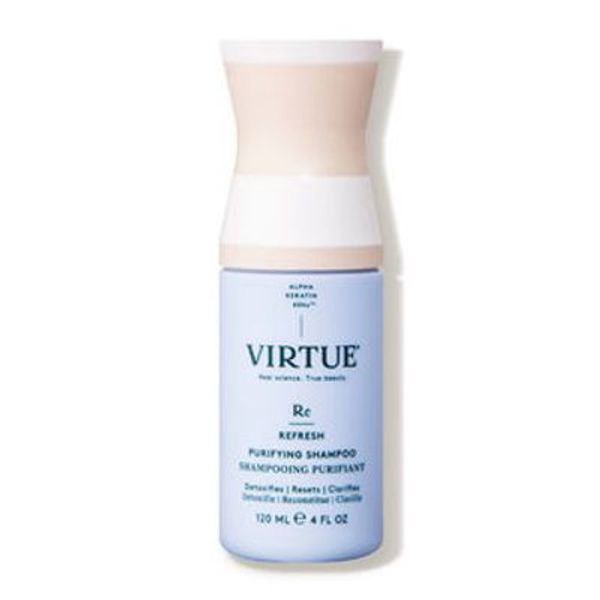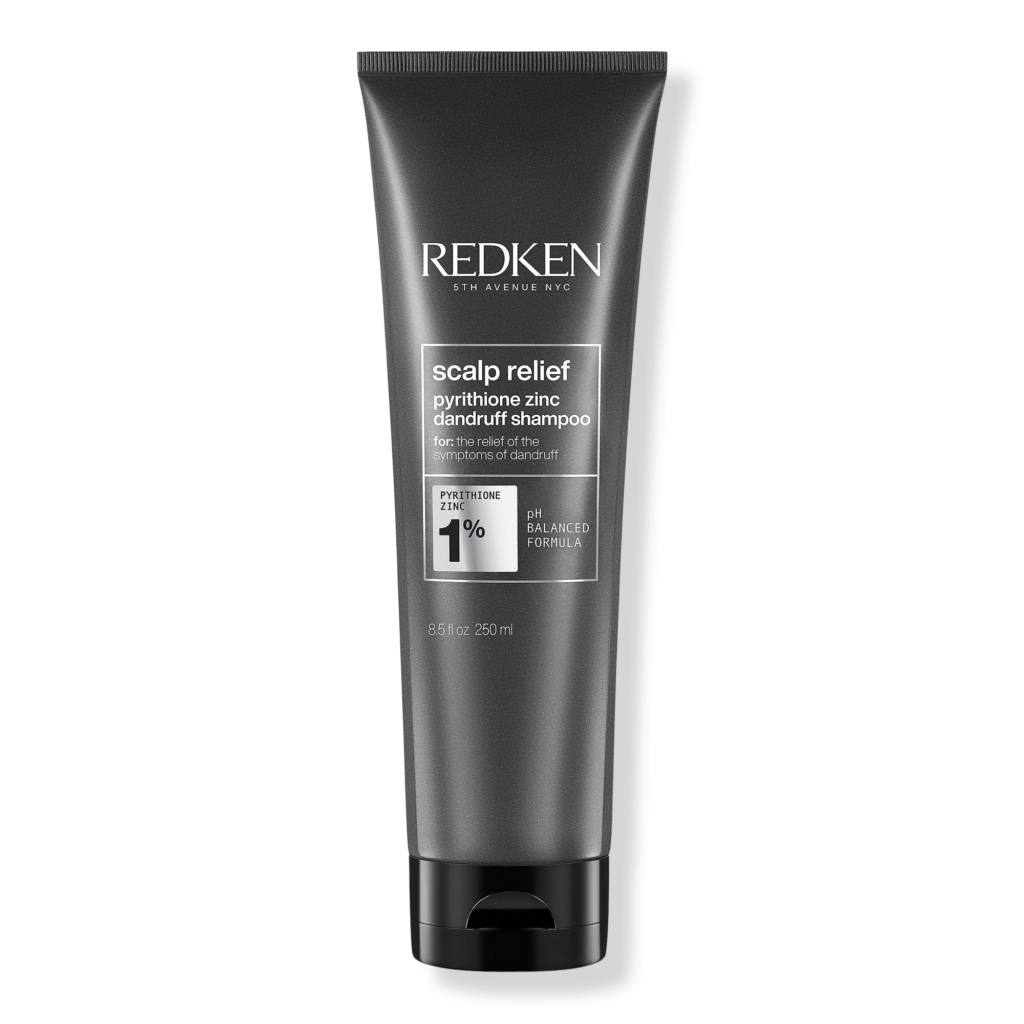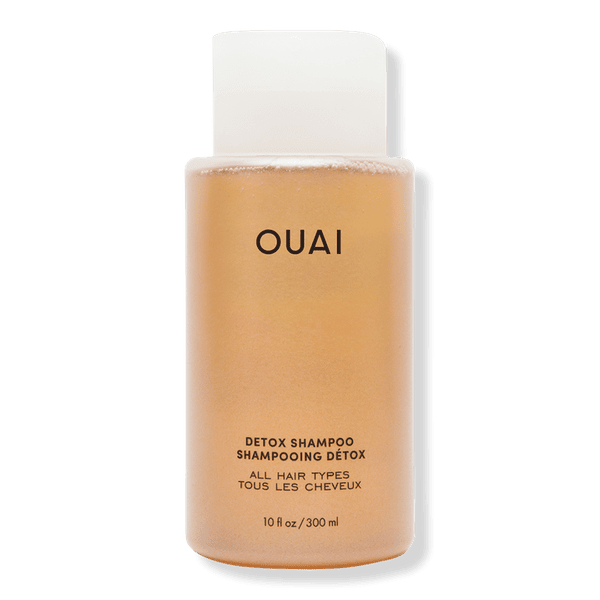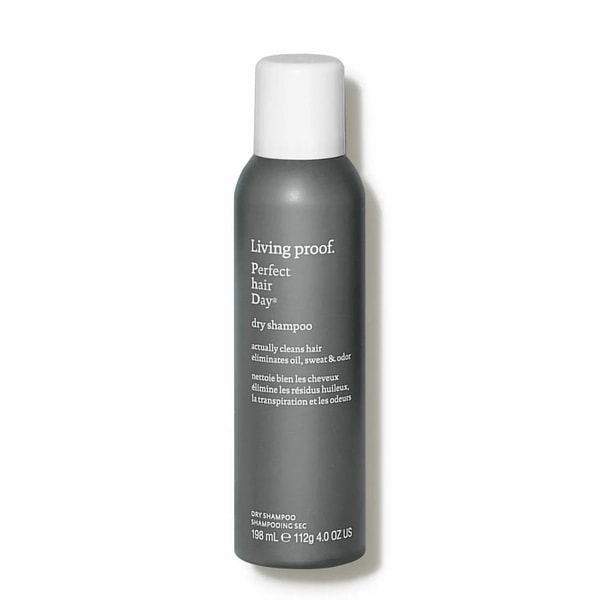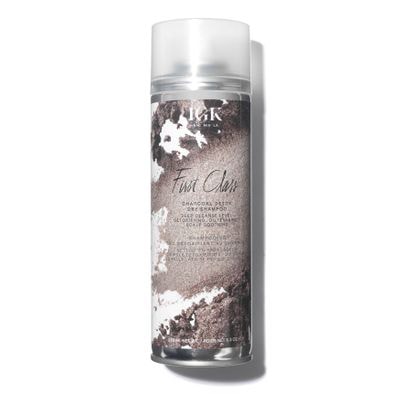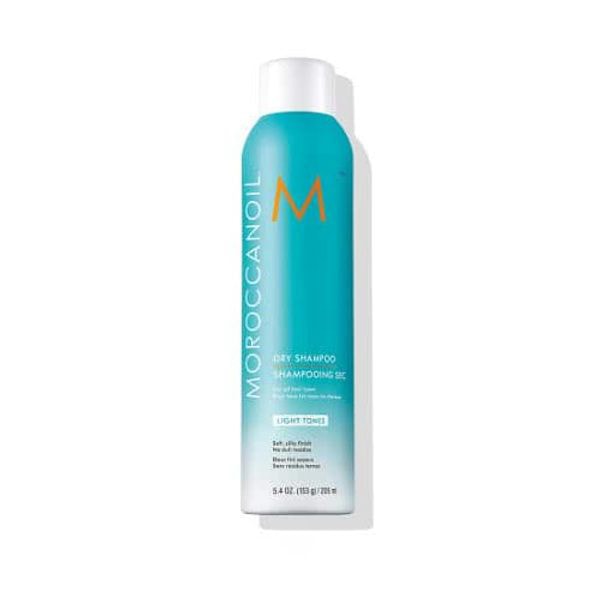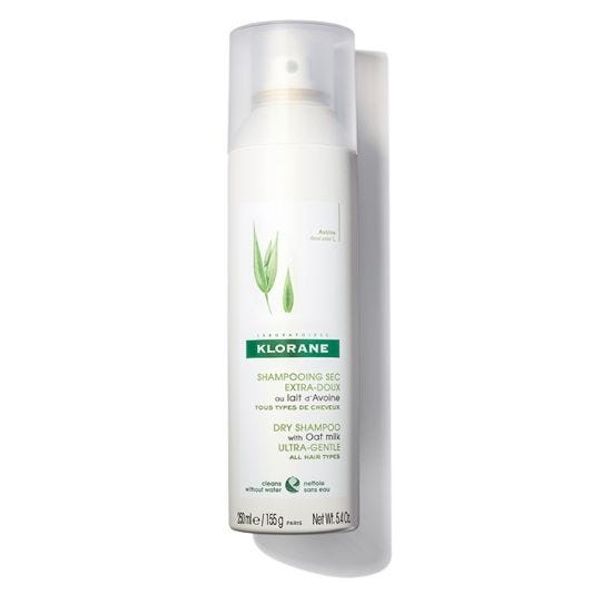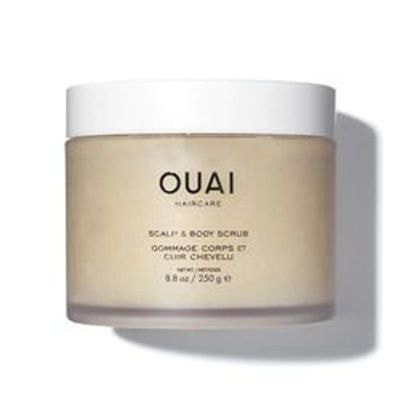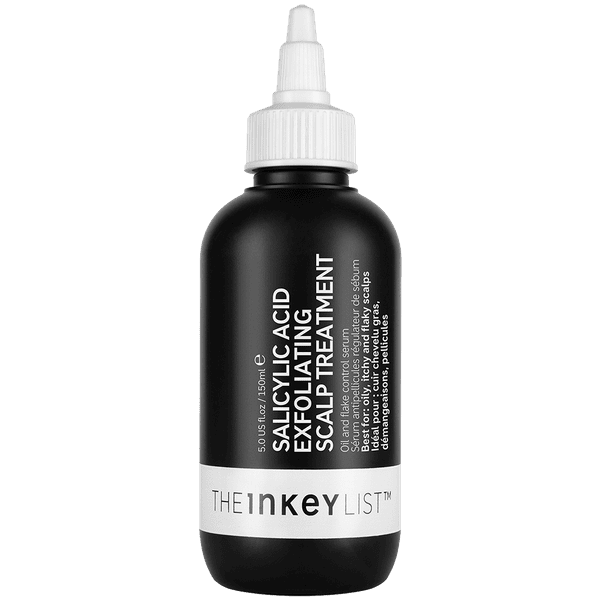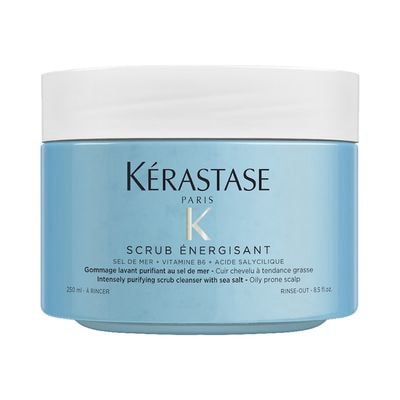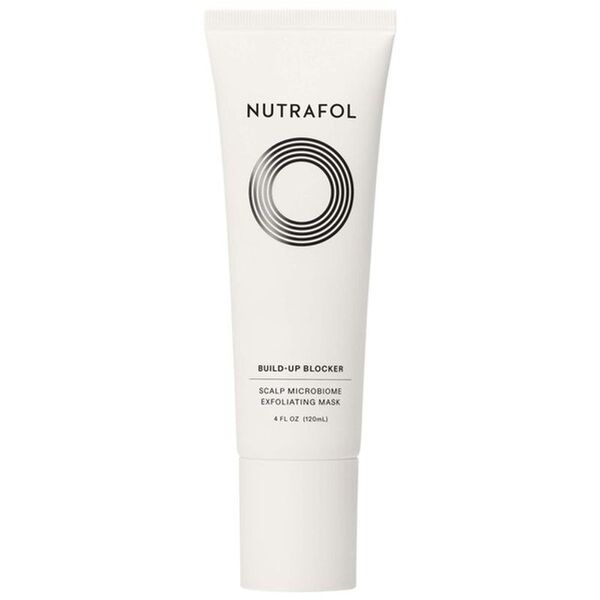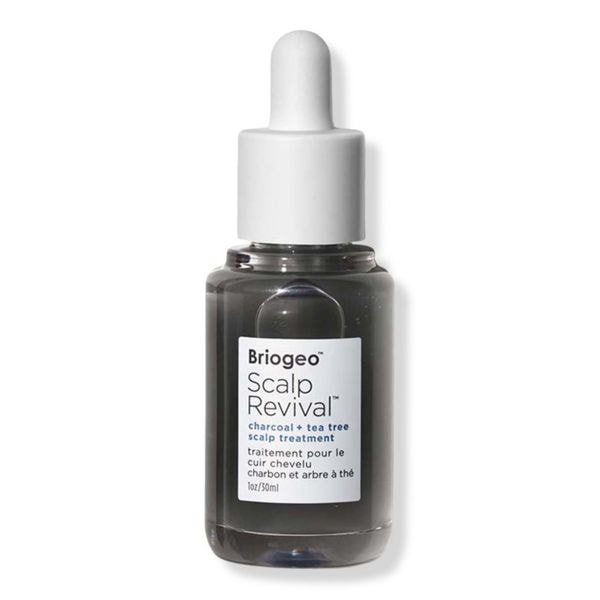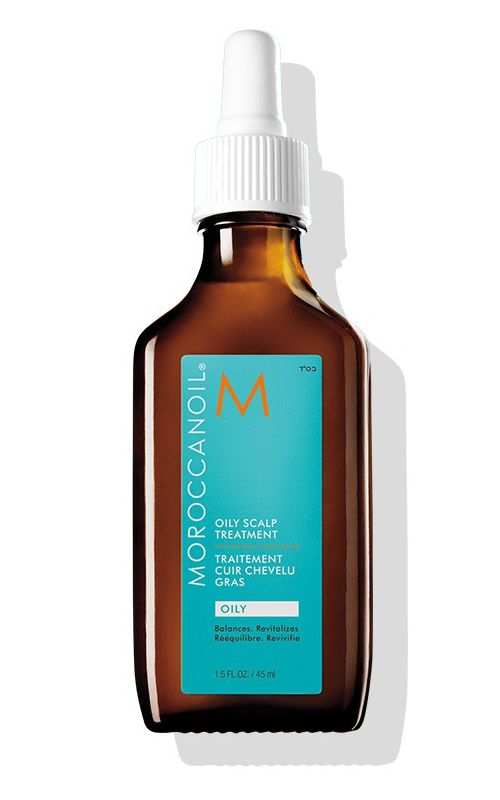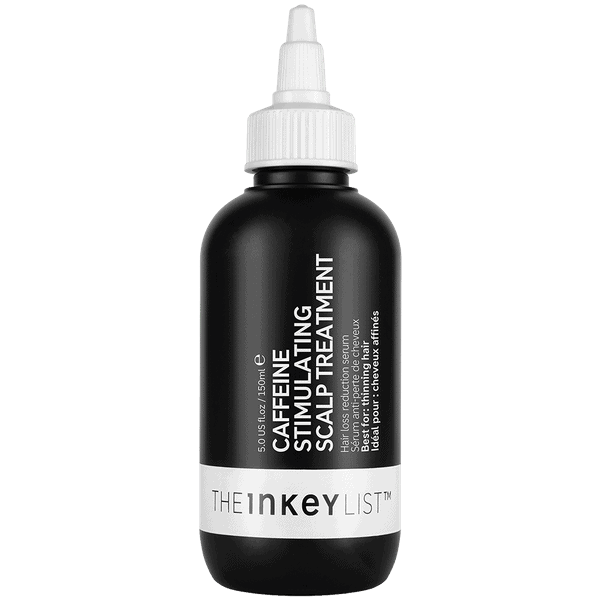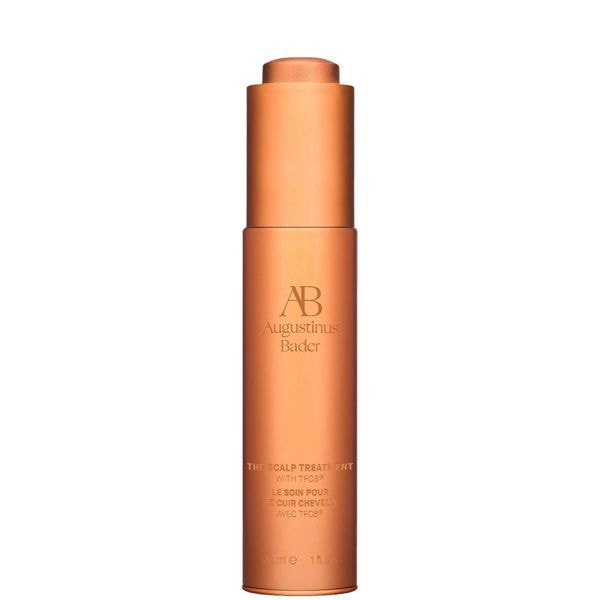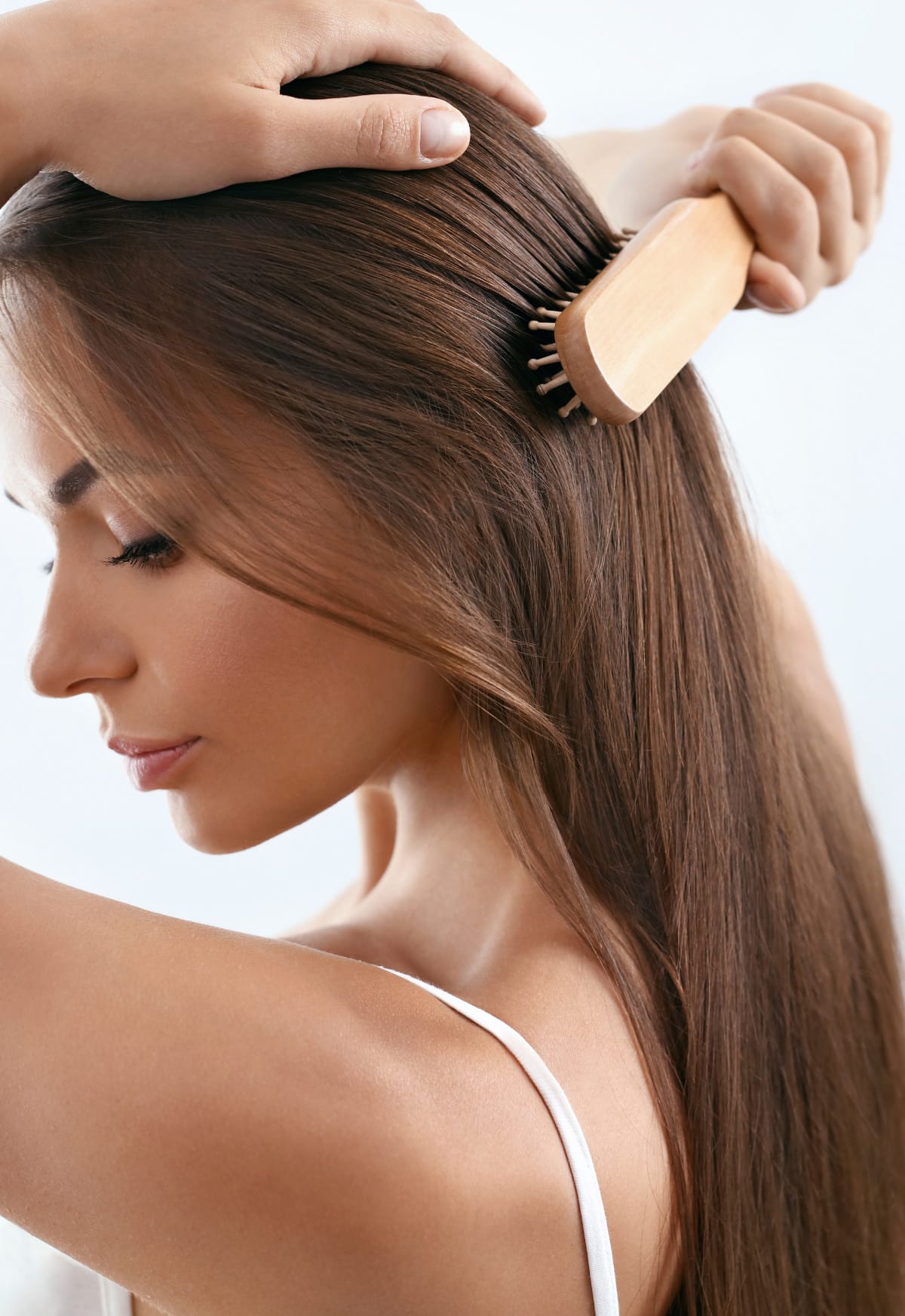
Are you constantly battling oily hair, tirelessly searching for solutions on how to make hair less greasy and more manageable? The struggle with oily hair can feel never-ending.
Don’t worry; you’re not alone in this hair crisis. I’ll guide you through a five-step approach to tackling greasy hair for good.
Understanding the root cause of your oily hair predicament is a good starting point. From there, we’ll explore proven, effective methods that could be your game changer: the right shampooing techniques, dietary adjustments to consider, and tips on embracing a less oil-triggering hairstyle.
It’s no magic, but with the consistent application of these tips, you’re on a near-guaranteed trajectory to say goodbye to greasy hair days. Stay tuned to learn how to make hair less greasy and manageable with these nifty tricks of the trade.
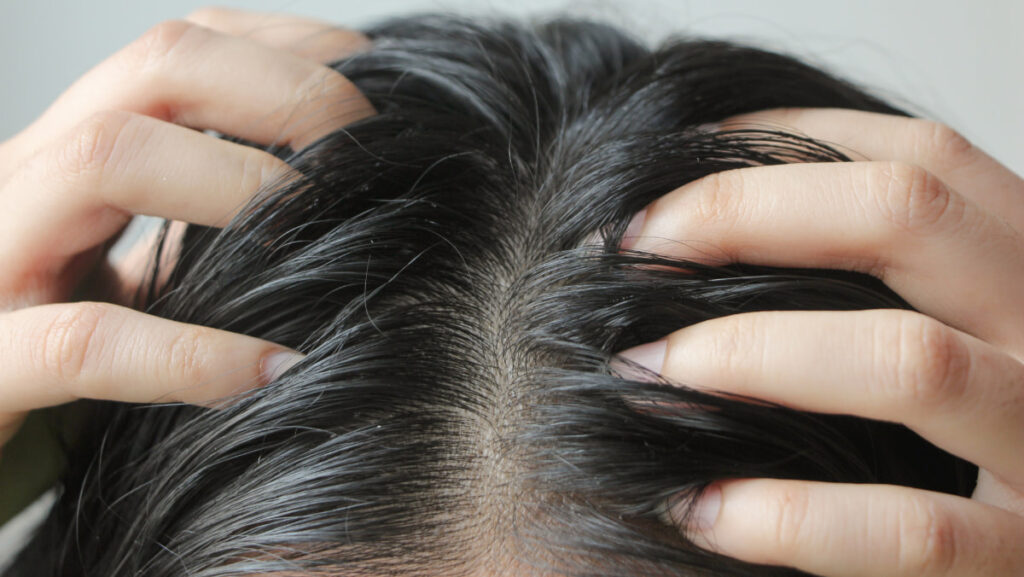
The Science Behind Hair’s Natural Oil
Have you ever wondered why your hair gets so greasy? Turns out, it’s all down to your scalp and the sebum it produces. Sebum is an oily, waxy substance produced by your body’s sebaceous glands – found in abundance on your scalp.
I know all you’re thinking is how to make hair less greasy, but sebum is important for hair health.
It serves to protect the scalp and hair. Like an all-natural conditioner, sebum prevents your hair and scalp from drying out. Plus, it preserves hair elasticity and sheen.
But when your glands churn out more sebum than necessary, your hair will take on that unwelcome, greasy look.
Several factors influence sebum production. Hormonal fluctuations, for instance, play a huge role. Hormones, especially androgens (the so-called ‘male hormones,’ also found in females), are known to ramp up sebum production.
If you’ve ever noticed your hair greasier during periods of stress or just before menstruating, you’ve experienced this firsthand.
Diets high in sugar and processed foods can also boost sebum production. These foods cause your insulin levels to spike, which can then throw your hormones off balance – triggering your sebaceous glands into overdrive.
While a greasy hair day is no cause for alarm, consistently oily hair could indicate an underlying issue. Problems like seborrheic dermatitis or dandruff could be potential outcomes.
Pro tip: If you’re battling incessantly oily hair despite your best efforts, it’s time to consult a dermatologist.
Understanding The Root Causes Of Greasy Hair
Feeling like your hair’s always on the greasy side no matter how much you wash it? Well, you’re not alone. Let’s dive into understanding the root causes of greasy hair, so you can tackle it more effectively.
As we discussed earlier, when produced excessively, our scalp’s natural oil leads to that unwanted greasy look. But what is the reason for sebum overproduction on the scalp?
For starters, your scalp may just be flat-out genetically predisposed to produce more oil. Just as some people have dry skin, others have oily scalps. If oily hair runs in the family, chances are you’re more likely to deal with it too.
Several factors may increase sebum production; the key is hormonal fluctuations. Times of hormonal imbalance in your body, such as puberty, pregnancy, or menstruation, can send your oil glands into overdrive.
Stress can also kickstart this overproduction, and unfortunately, it can become a vicious cycle: stress fuels oil production, and greasy hair can stress you out, which fuels more oil production.
Then there’s the role of your hair type and texture. Your hair type is another factor that contributes. In particular, thin, straight hair tends to get oily faster than curly or wavy hair. This is because oil from your scalp can easily travel down the hair shaft.
Lastly, your haircare habits and styling routine might be the culprit, too. Either overwashing or scarcely washing your hair can lead to oil accumulation. Even though washing your hair very often may seem like the logical solution to greasiness, it can stimulate reactive overproduction of oil.
Breaking the myth: Overwashing can strip your scalp of its natural oils, prompting it to produce more sebum to compensate.
Also, applying too many heavy products or constantly touching your hair can lead to oiliness soon after a wash. Wrongly applying conditioner on the scalp or not rinsing your hair-wash products well can lead to product build-up and excessive greasiness.
It’s a classic case of too much of a good thing turning bad. These factors may hold some responsibility for your greasy-hair woes.
Wondering how to make hair less greasy? Going over them to identify a potential culprit can be life-changing, as most are reversible.
Distinguishing Different Types Of Greasy Hair
Knowing what’s happening with your hair is the first step toward finding how to make hair less greasy. Probably all of us have gone through a period of extra oiliness on our scalp. Does this mean our hair is greasy by default?
Greasy or oily hair can come in various forms, and knowing how to distinguish between different types could make a significant difference in managing it. Let’s get down to understanding the various types.
Excessively oily hair is one type you might be encountering. If you fall in this category, you’re likely finding grease build-up in your hair shortly after washing – within a few hours or by the end of the day.
This type of greasiness is often the result of overactive sebaceous glands – or, in other terms, overproduction of sebum – producing excessive oil. You might notice that your hair looks weighed down, lacks volume, and may even have a distinctive odor.
Another type is the combination of dry and oily hair. This is a strange case where your scalp is oily, but the hair ends are dry.
It’s a challenge because you must simultaneously address both contradictory issues. You may identify this type by the appearance of parched, frizzy ends while the roots are oily.
Lastly, we have the occasional greasy hair category. In this type, your hair and scalp are typically normal, but factors such as your diet, stress, heat, or product build-up could trigger occasional bouts of greasiness. Unlike constant greasy hair, this type doesn’t always stick around.
| Type of Greasy Hair | Primary Characteristics | Possible Causes |
|---|---|---|
| Excessively Oily Hair | Oily shortly after washing | Overactive sebaceous glands |
| Dry and Oily Combination | Oily scalp with dry ends | Imbalance in scalp and end health |
| Occasional Greasy Hair | Infrequent bouts of oiliness | Diet, stress, or product build-up |
How To Make Hair Less Greasy: 20 Foolproof Tips
Greasy hair can be a constant source of anxiety and low self-esteem. Whether you have an oily hair type or struggle with occasional oiliness, looking into the matter is important.
Wondering how to make hair less greasy is not the only thing you can do about it. Here are some tips for ensuring your hair stays oil-free as much as possible.
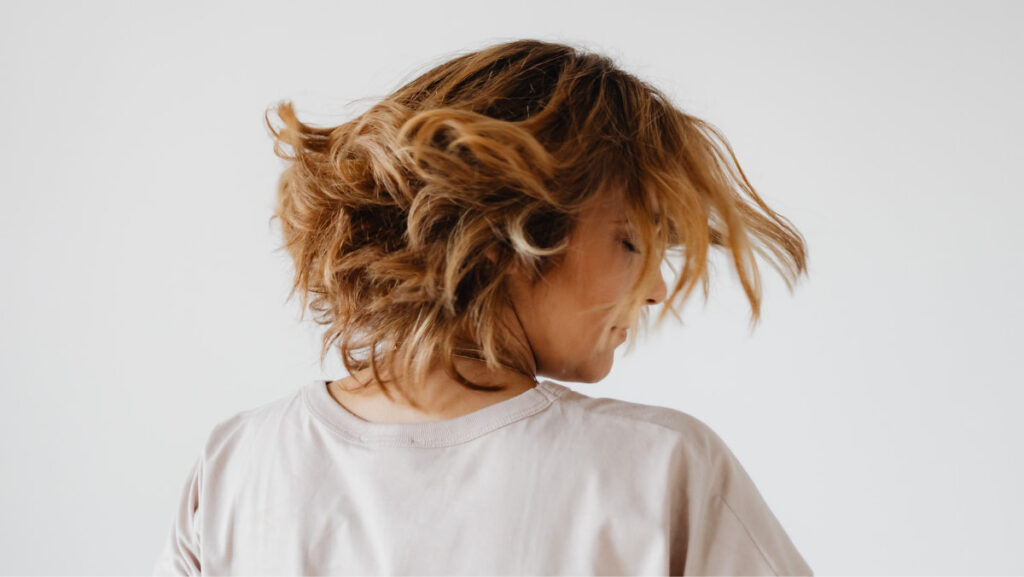
Choose The Right Hair Care Products
How can choosing the right hair products help with greasy hair? Using overly heavy products intended for dry hair can accentuate oiliness. On the other hand, you can find ingredients that can control oil production and reduce greasiness.
Making the right choice can feel overwhelming in a world full of hair care products. But don’t worry. I’m here to simplify it for you.
Let’s break the tips on how to make hair less greasy down:
1. Choose The Right Shampoos
Opt for a shampoo specifically designed for oily hair. These are often labeled as ‘clarifying,’ ‘volumizing,’ or ‘balancing.’ They often contain oil-regulating ingredients, such as tea tree or citrus oils. They’re designed to remove greasiness without stripping your scalp of its natural oils.
2. Go For The Right Conditioners
Remember to select a lightweight conditioner. Heavy ones can weigh your hair down, making it look greasier. They can also sit on top of your scalp instigating excessive oil production. You should also avoid using conditioner near your roots, but more on that later.
3. Invest In A Hair Mask
Once a week, use a hair mask that targets greasy hair. Ingredients like tea tree oil and charcoal are well-known for their oil-absorbing properties. Be careful not to overdo it with this drying process, as your skin may bite back with sebum overproduction.
4. Go Silicone And Sulfate Free
Quality matters too. Look for products free of silicone and sulfates. These compounds can build up on your scalp, leading to blockages and more oil production. They also prevent essential nutrients from reaching your scalp and perform their action.
5. Get An Exfoliant or Scalp Scrub
You see, your scalp is just like the rest of your skin—it can accumulate dirt, oil, and dead skin cells over time. That buildup not only weighs down your hair but also makes it look and feel greasier than it actually is.
But fear not! A good ol’ scalp scrub comes in handy here. Think of it as a facial for your scalp—it sloughs away that pesky buildup and gives your roots some much-needed breathing room.
There are plenty out there to choose from, too! When shopping around for an exfoliant or scalp scrub, keep these key ingredients in mind:
- Salicylic Acid: This helps dissolve excess sebum (oil) on the scalp.
- Sugar Crystals: They offer physical exfoliation to lift off dead skin cells.
- Tea Tree Oil: Known for its antimicrobial properties, tea tree oil can help reduce any itchiness or flakiness associated with oily scalps.
You’re probably wondering how often you should use one? Well, once a week should do the trick. Just make sure not to overdo it—you don’t want to irritate your sensitive noggin!
Pro tip: Look out for ingredients like dimethicone, Cyclomethicone, etc., as these are silicone variants.
Mastering Correct Hair Washing Techniques
You might think you’ve got hair washing down pat – it’s simple, right? Wrong. In reality, there’s a lot more to it that we ignore. Mastering proper hair washing will help you achieve your oil-free hair goals.
While looking into how to make hair less greasy, you will also unlock the secrets of deep cleansing your scalp properly. So, let’s run through the proper techniques.
6. Stay Cool
If you have searched for how to make hair less greasy in the past, you may have stumbled upon the advice of washing with warm water.
However, hot showers being beneficial for your hair is a myth. On the contrary, hot water can lead to the stripping of natural oils from your scalp, which ironically causes it to produce more oil as a response.
Excessively warm water can also cause irritation, which will be responded to with greasiness. Lukewarm water is your hair’s best friend to avoid this unnecessary pitfall.
7. Use The Right Technique
Expert hair stylist, trichologist, and founder of Act + Acre, Helen Reavey, suggests that we have been washing our hair incorrectly. First, it’s not about washing the hair but the scalp underneath.
Proper washing can improve several scalp concerns, including dandruff and greasy hair. So, let’s dive into her precious advice.
According to Helen, we should focus on the scalp area of the back of our heads on our first wash. This area is the most commonly neglected, harboring the most issues.
After gently massaging there, rinse and repeat, focusing on the scalp area of your temples. Then, rinse and go! No, there is no need to rub your ends. Helen suggests that the soap water rinsed down from your scalp is enough to clean.
Pro tip: Rubbing and tugging your edges can lead to breaking and splitting, especially when they are dry.
8. Cleanse Once Or Twice Accordingly
When searching for how to make hair less greasy, you have probably heard it all… Wash only once. Do a repeat cleanse. Is there a right answer?
According to Helen, it depends on how often you wash your hair. If you clean your scalp daily, you most likely need to wash it once. You should wash twice if there are longer intermediates between wash days.
The first run-through will remove the excess oil, dirt, and bacteria, while the second will cleanse the scalp and deliver the shampoo’s nutrients to the roots.
9. Wash As Often As You Need It
As you already know, both overwashing and washing can rarely cause a greasy situation. If you already wash your hair every day, and you still look oily at the end of the day, chances are that your scalp is dried and needs the moisture of its natural oils.
Consider washing your hair less often and experiment with looks that cleverly mask your oily roots, such as sleek ponytails or wet looks. Otherwise, throw in some dry shampoo that will do the trick.
10. Don’t Overdo It With Shampoo
Remember, it’s about the quality, not the quantity of your shampoo. Too much shampoo can dry out your scalp, triggering more oil production. It’s not that more scrubbing equals cleaner hair! It’s best to use a small amount – think the size of a quarter, and focus that on your scalp, not the hair length.
11. Rinse Thoroughly
Next up, let’s talk about the rinse. After shampooing, be sure to rinse thoroughly. You can’t afford leftover shampoo building up on your scalp, making it look greasy only hours after washing. Insufficient rinsing is more of a greasiness culprit than you’d possibly imagine.
12. Condition The Right Way
The final advice is conditioning. If you’ve been avoiding conditioner, worried it’ll add to the greasiness nightmare, you’ve been misled. Conditioner is essential, but the secret lies in its application. Remember to apply conditioner only to the mid-lengths and ends of your hair – the parts which need it the most.
Pro tip: Mid-length means that your hand should aim at the level of your ears or lower.
Brushing Techniques For Oil Distribution
In the quest to find how to make hair less greasy, mastering proper brushing techniques can be your surefire weapon.
13. Brush Before You Sleep
Gone are the days when you’d brush your hair mindlessly. From now on, you’ll focus on distributing your scalp’s natural oils, ensuring they don’t build up at the roots.
Remember to brush your hair before you hit the hay. Brushing at night is critical as it gives your scalp a break from accumulating excess oil during sleep. The process is pretty straightforward; use gentle strokes from roots to tips.
14. Use A Clean Brush
Can you count the many uses you have bestowed upon your brush? Besides brushing your hair, it also distributes creams, foams, and styles after product placement.
Remember to clean your brush as often as it needs. A dirty one will only reintroduce old oil, dirt, and leftover products into your hair, leading to a greasy look.
15. Choose The Right Brush
Type of brush matters too. Wide-toothed combs or brushes are hailed as a saving grace for greasy hair. Their wider gaps aid in spreading out the oils evenly, preventing concentration in one spot.
16. Don’t Overdo It With Brushing
Don’t go overboard with brushing. Though it’s beneficial, over-brushing can stimulate oil production, leading to greasier hair. So, find your hair’s sweet spot – a balance between enough and excessive brushing.
Styling Your Hair
17. Avoid Touching Your Hair
Constantly running your hair through your fingers can transfer oil to your strands, exacerbating the greasiness. Also, touching your oily face (you really shouldn’t) and then combing your hair with your hands is a no-return ticket to oiliness.
Breaking the habit of constantly touching your hair may require some time and conscious effort, but the results will be worth it.
18. Use Dry Shampoo
Using dry shampoo can be a lifesaver for my busy girls with oily hair. Dry shampoo is designed to absorb excess oil, sweat, and dirt from the scalp, making the hair look cleaner and less greasy. Just spray or dab a bit on the roots to reverse the oily effect without the hassle of everyday washing.
You can use dry shampoo for a touch-up between shower days to have a smoother transition to scarcer washes. This will allow your scalp to recover from over-drying while you don’t have to worry about bad hair days!
19. Let Your Hair Air-Dry
Surprisingly, excessive blow-drying can lead to an overproduction of natural oils in your hair, resulting in increased greasiness.
According to Polko, an alternative approach is to allow your hair to air-dry. While this method may require more time, there are techniques to expedite the process.
Instead of using oil, Polko suggests applying a leave-in conditioner to the ends of your hair immediately after washing it. This not only maintains a fresh appearance but also reduces drying time.
It’s advisable to minimize touching your hair while it’s still damp, especially if you have wavy or curly hair, as excessive handling can lead to frizz. Instead, apply your hair products and let your hair air-dry naturally until it’s fully dry.
20. Mask Greasy Hair With A Hairstyle
This nifty trick is not about how to make hair less greasy but rather how to cleverly hide them. When your hair gets too oily to wear down, consider playing with a sleek ponytail or bun.
Trying a wet look is also perfect for masking greasy hair while also giving you an edgier, bolder air. If you like something more relaxed, you can tease your roots to look messier and loosely braid the rest of your hair.
Consider Your Diet Choices
21. Eat For The Health Of Your Hair
By adopting a diet that emphasizes lean proteins, fruits, vegetables, vitamin B-rich foods, and water intake, you’ll be taking a holistic approach to reducing greasiness and promoting healthy hair.
Remember, the road to less greasy hair starts from within, so nourish your body and enjoy the benefits of a balanced diet.
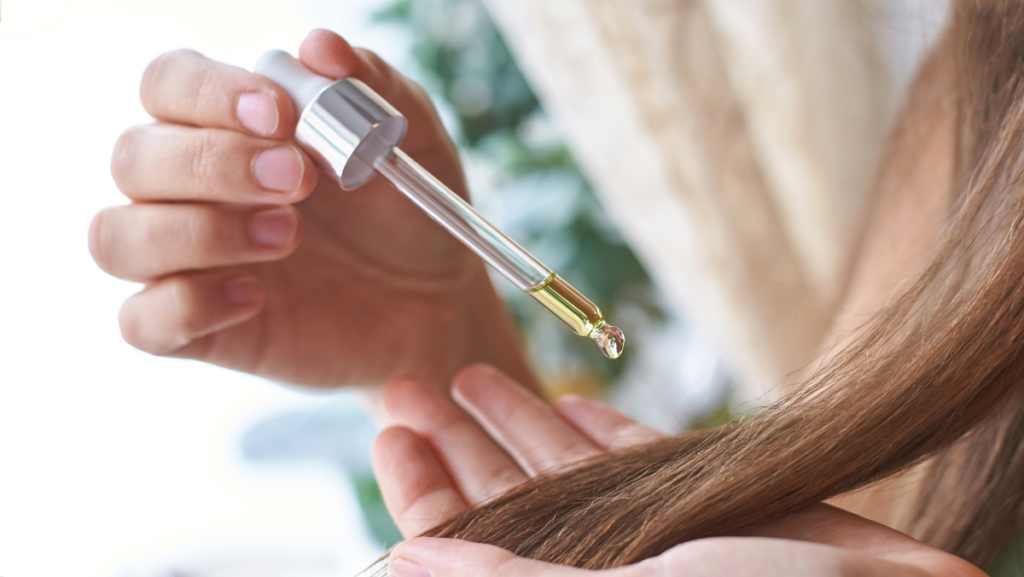
How To Make Hair Less Greasy With Natural Remedies
Mama Earth’s natural apothecary can also help you in your quest to tackle oily hair. Here’s how to make hair less greasy with natural remedies:
First, there’s the magic of apple cider vinegar. When diluted with water, it functions as a natural hair clarifier, removing any build-up that contributes to oiliness. Just remember, it’s potent stuff, so it’s important to rinse thoroughly afterward.
Next, consider the benefits of aloe vera. This plant’s pulp has enzymes that directly counteract excessive oil production. By mixing a small amount into your regular shampoo, you’ll quickly start to notice your hair regaining its desired balance.
Additionally, don’t forget the value of natural oils. It might seem counterintuitive, but using certain oils, like jojoba and tea tree, can actually reduce the oil in your hair. These work by mimicking the oils naturally produced by your scalp, tricking it into producing less.
DIY Greasy Hair Solutions At Home
I know you think, “Okay, fun, but how do I use these products?!” Your very own kitchen can offer a variety of ingredients to combat oil build-up. Let’s explore these all-natural, grease-fighting champions.
- Apple Cider Vinegar (ACV): To use apple cider vinegar for greasy hair treatment, start by diluting it with water in a 1:1 ratio. After shampooing and conditioning your hair, pour the mixture over your scalp, ensuring that it reaches every nook and cranny. Gently massage your scalp for a few minutes to let the vinegar work its magic. Then, rinse thoroughly with lukewarm water.
- Aloe Vera: Blend the gel from a leaf with your regular shampoo for an at-home solution. Or have an aloe vera mask by applying the gel directly to your scalp. Massage gently for a few minutes, allowing the gel to penetrate your scalp and hair follicles. Leave it on for about 15 to 20 minutes, allowing the magical properties of aloe vera to work their wonders. Finally, rinse thoroughly with lukewarm water.
- Tea Tree Oil: To harness the benefits of tea tree oil for greasy hair, start by diluting a few drops of tea tree oil in a carrier oil like jojoba or coconut oil. After shampooing and conditioning your hair, apply the diluted mixture to your scalp, focusing on the roots and areas prone to oiliness. Massage gently for a few minutes to stimulate circulation and allow the oil to penetrate deeply. Let it sit for 10 to 15 minutes before thoroughly rinsing it with lukewarm water.
No fancy treatments or products are necessary – just smart use of what’s already available. So, smile and wave your greasy hair goodbye!
These key ingredients offer a unique, natural approach to managing oil tendencies. Remember: these are anecdotes for occasional oiliness, not a substitute for professional care.
Best Greasy Hair Products
If you’re not feeling the DIY part, no worries, because there are a lot of great products on the market to tackle greasy hair too. Here are some of my personal favorite ways:
Shampoo
- VIRTUE Purifying Shampoo: This shampoo provides a great balance by effectively removing dirt while also being gentle on the scalp, avoiding any irritation. It proves that one doesn’t need to be harsh to achieve a thorough cleansing.
- Kevin Murphy Balancing Wash Shampoo: Thanks to the irritation-free shampoo, it was easy to untangle the hair. The shampoo improved the softness of the hair and reduced product build-up for almost everyone.
- Redken Scalp Relief Dandruff Control Shampoo: This formula includes peppermint extract, which refreshes the scalp and fights against dead cells while also providing a calming and soothing effect. Its balanced composition makes it safe to use frequently without leaving your hair feeling stripped or dry like a straw.
- OUAI Detox Shampoo: With the help of apple cider vinegar, this shampoo aids in removing product build-up and detoxifies your hair. It effectively removes the excess oil from your hair, leaving it shiny and healthy-looking.
Dry Shampoo
- Living Proof Perfect Hair Day (PhD) Dry Shampoo: While not a treatment per se, a good dry shampoo can help manage an oily scalp. The Living Proof PhD Dry Shampoo is a popular option that helps to absorb excess oil and refresh the hair between washes.
- IGK First Class Charcoal Detox Dry Shampoo: Another dry shampoo option; this product contains charcoal powder to absorb oil and impurities, leaving the scalp feeling refreshed.
- Moroccanoil Light Tones Dry Shampoo: If you have platinum, silver, or white hair, you can benefit from using this Moroccanoil dry shampoo that contains rice starch to absorb any buildup or grease. Additionally, argan oil is effective in smoothing and nourishing your bleached strands.
- Klorane Dry Shampoo with Oat Milk: This dry shampoo is great at absorbing oil, giving lots of volume, and blending well with different hair types and colors.
Exfoliating
- Ouai Scalp & Body Scrub: This product from Ouai, although marketed as a body scrub, can also be used to exfoliate the scalp and remove buildup. This helps to reduce oiliness and promote healthy hair.
- The Inkey List Salicylic Acid Exfoliating Scalp Treatment: This serum is lightweight and gently exfoliates the scalp to combat flakes and itchiness. It also visibly balances oil levels and reduces irritation.
- Kerastasé Energizing Scrub: This is a scrub that is specially designed for people with oily scalps. It helps to exfoliate and promote healthy-looking hair.
- Nutrafol Build-Up Blocker Scalp Exfoliating Hair Mask: This scalp mask is formulated by a physician and contains natural ingredients that help to eliminate impurities and preserve the scalp microbiome.
Leave-In Treatments and Serums
- Briogeo Scalp Revival Charcoal + Tea Tree Scalp Treatment: This treatment from Briogeo contains charcoal, tea tree oil, and witch hazel to help detoxify and soothe the scalp while reducing excess oil.
- Moroccanoil Oily Scalp Treatment: This is a pre-shampoo serum that only takes five minutes to use. It’s designed to purify, revitalize, and rebalance an oily scalp, making it visibly healthier.
- The Inkey List Caffeine Stimulating Scalp Treatment: This overnight treatment stimulates the scalp and hair follicles to prevent hair fall and promote hair growth, resulting in thicker-looking hair strands.
- Augustinus Bader The Scalp Treatment: This treatment rejuvenates and balances your scalp by clearing blocked hair follicles, and strengthening and revitalizing hair strands from the root.
FAQ: Quick Tips & Tricks
How Do I Stop My Hair From Getting Greasy?
There are simple changes you can make in your hair care routine to help keep that slick situation under control.
First off, let’s chat about shampoo and conditioner. Your choice of these products can have a huge impact on the oiliness of your hair. So here are some tips:
- Look for products labeled ‘clarifying shampoo’ or ‘balancing shampoo’. They’re designed to deep-cleanse and remove excess oil.
- When applying conditioner, focus on the ends of your hair instead of the roots. This prevents buildup at the scalp, which could contribute to greasiness.
Next up is how often you wash your locks. While it might seem counterintuitive, washing your hair too frequently can actually lead to more oil production – talk about backfiring!
That’s because when you strip away natural oils by washing too much, your scalp tries to compensate by producing even more sebum.
Here are some general guidelines:
- If you’ve got fine or oily-prone hair: aim for every other day
- For normal or combination (some parts dry/some parts oily) tresses: every two days should do
- Thick or curly manes usually get along just fine with once-a-week washing
Another important point is touching our lovely locks – we all love running fingers through our mane, but did ya know that constantly touching it distributes oils from our fingertips onto our strands? Yeah…we didn’t either!
How Do You Refresh Greasy Hair Fast?
Dry shampoo is your best friend when it comes to refreshing greasy hair in a hurry. It works by soaking up excess oil from your roots, giving them that just-washed look without having to hop in the shower.
Just spray it onto your roots, massage it in with your fingers, then brush through to distribute evenly.
If you’re out of dry shampoo or want something more natural, household items like baby powder or cornstarch can work wonders, too!
These powders have similar oil-absorbing properties as dry shampoo. Sprinkle a small amount onto your roots and blend well into your hair for instant freshness.
A change-up in hairstyles can also help disguise greasy strands while making you look chic at the same time. Styles like messy buns or braids not only hide oiliness but also keep hair off your face – an added bonus if breakouts are causing concerns!
Lastly but importantly, regular brushing helps distribute those pesky oils away from the scalp down towards ends where they’re needed most!
Why Is My Hair Suddenly Getting Greasy So Fast?
Firstly, it could be down to your diet. Believe it or not, what you eat has a direct impact on the condition of your hair.
Eating foods high in oil and fats can increase the amount of sebum produced by your scalp. This natural oil is necessary for keeping our hair healthy and shiny, but too much can leave us with that unwelcome, greasy look.
- Foods to watch out for:
- Fast food
- Fried foods
- Dairy products
Another reason could be overwashing. It seems counterintuitive, but washing your hair too often can actually make it greasier!
When we wash our hair excessively, we strip away its natural oils, which leads to an overproduction of oil as our scalp tries to compensate for what’s lost.
A change in weather or climate may also play a part. Hotter temperatures encourage the production of sweat, which can mix with the oils on our scalp, making our locks appear more oily than usual.
Lastly, stress might also be a contributing factor here, folks! Stress increases cortisol levels, which subsequently increases oil production on the scalp.
How To Make Hair Less Greasy: Manageable Locks Without The Hassle
You’ve made it to the finish line and gained deep knowledge on how to make hair less greasy and win the oil battle. Staying committed to these simple tips will make a world of difference for your hair.
Victory over greasy hair is within your reach; no more anguish and frustration about your oily strands!
Just remember that every head of hair is unique. What works for others might not work for you. So, feel free to test things out to find what suits your needs.
Monitor how your hair responds, make changes accordingly, and you’ll surely settle into a routine that gives you healthy, non-greasy, manageable hair.
Start your hair revolution today and say goodbye to the greasy hair blues!
How we reviewed this article
- Process

